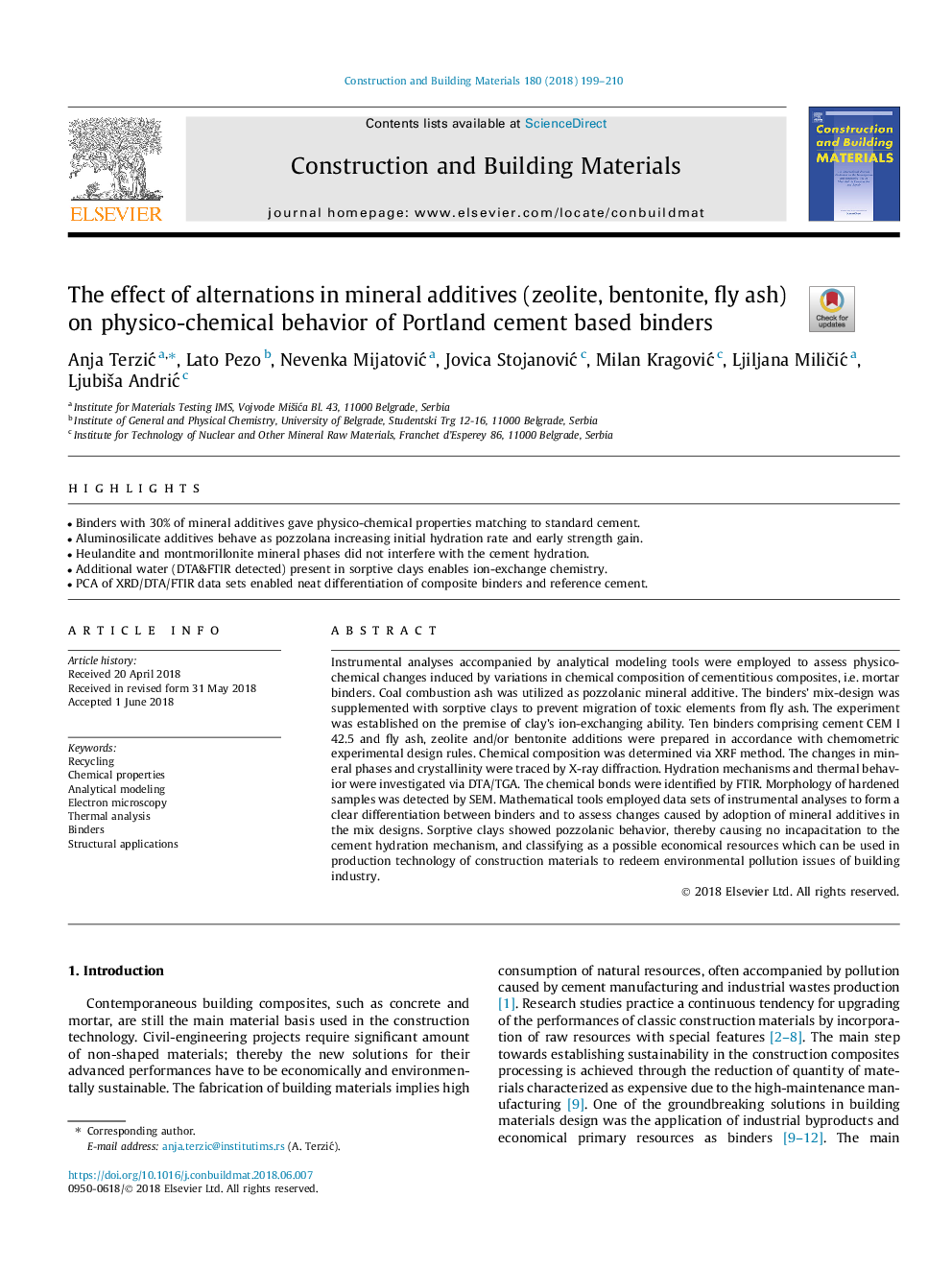| Article ID | Journal | Published Year | Pages | File Type |
|---|---|---|---|---|
| 6712500 | Construction and Building Materials | 2018 | 12 Pages |
Abstract
Instrumental analyses accompanied by analytical modeling tools were employed to assess physico-chemical changes induced by variations in chemical composition of cementitious composites, i.e. mortar binders. Coal combustion ash was utilized as pozzolanic mineral additive. The binders' mix-design was supplemented with sorptive clays to prevent migration of toxic elements from fly ash. The experiment was established on the premise of clay's ion-exchanging ability. Ten binders comprising cement CEM I 42.5 and fly ash, zeolite and/or bentonite additions were prepared in accordance with chemometric experimental design rules. Chemical composition was determined via XRF method. The changes in mineral phases and crystallinity were traced by X-ray diffraction. Hydration mechanisms and thermal behavior were investigated via DTA/TGA. The chemical bonds were identified by FTIR. Morphology of hardened samples was detected by SEM. Mathematical tools employed data sets of instrumental analyses to form a clear differentiation between binders and to assess changes caused by adoption of mineral additives in the mix designs. Sorptive clays showed pozzolanic behavior, thereby causing no incapacitation to the cement hydration mechanism, and classifying as a possible economical resources which can be used in production technology of construction materials to redeem environmental pollution issues of building industry.
Keywords
Related Topics
Physical Sciences and Engineering
Engineering
Civil and Structural Engineering
Authors
Anja TerziÄ, Lato Pezo, Nevenka MijatoviÄ, Jovica StojanoviÄ, Milan KragoviÄ, Ljiljana MiliÄiÄ, LjubiÅ¡a AndriÄ,
